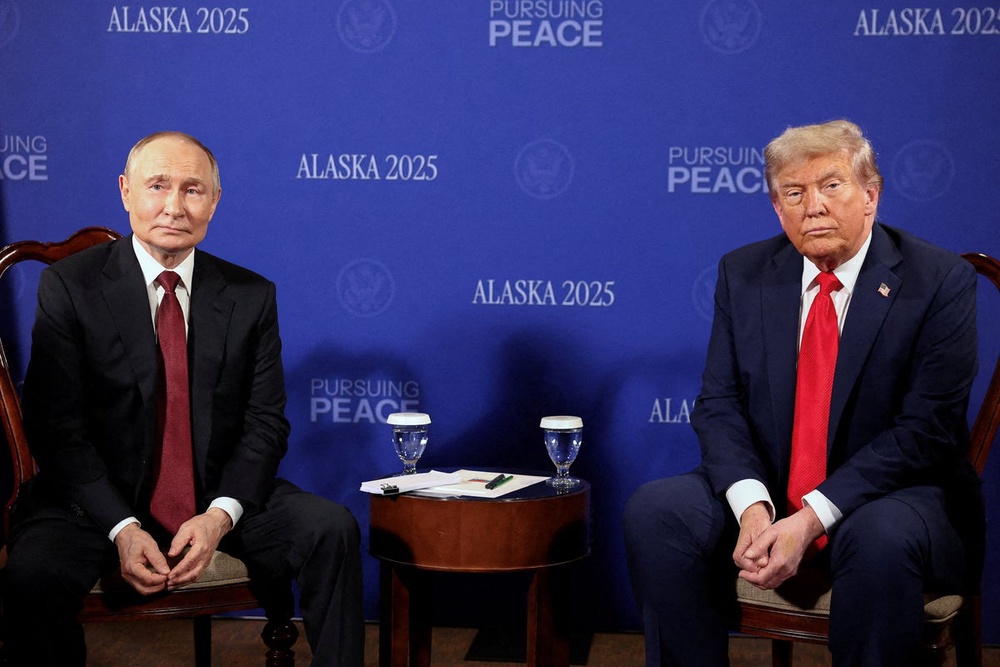While presidents Donald Trump and Vladimir Putin both got something out of the virtual bust, Europe and Ukraine are actually relieved that they failed to reach an agreement. This not only preserves Europe’s dignity but keeps the door open for future negotiations.

On Aug.15, the highly anticipated summit between Russian President Vladimir Putin and President Donald Trump of the United States concluded without little progress. A news conference followed in which Trump spoke highly of the talks, even though no documents were signed and no new consensus was revealed. For both sides, holding the talks at all was a significant achievement; neither expected to resolve all issues in a single meeting. Given the lack of clear criteria for success, the presidents were free to proclaim the outcomes as they pleased.
Pre-summit buildup
While the meeting itself was underwhelming, the pre-summit publicity was dazzling. First, the venue was carefully chosen. Initially, Trump suggested Saudi Arabia; the UAE and Hungary were also considered. Ultimately, Alaska was selected as the meeting place, where “both countries’ interests intersect.” Second, both sides prepared meticulously. The U.S. special envoy for Middle East issues, Steve Witkoff visited Russia for what were called “productive” talks, and raised public expectations. U.S. Vice President JD Vance coordinated with key European nations and the EU, and a three-way meeting was held by the United States, Europe and Ukraine. Russia also dedicated a meeting to preparation, and Prime Minister Mikhail Mishustin cut short his agenda in Kyrgyzstan to prepare for the summit in Alaska. Both sides made ample gestures, signaling their willingness to work for a solution to the conflict.
Trump hoped the summit would be a game-changer and aimed for a cease-fire agreement. He pressured Russia and warned of “severe consequences” if Putin rejected the proposal, while also hinting at a 25 percent chance that the talks would falter. The Russian side, however, remained astute. Despite the U.S. tough talk, they welcomed mediation. Putin acknowledged Washington’s active and sincere efforts to stop the fighting and defuse the crisis, noting common interests in resource development and reducing offensive strategic weapons.
No breakthroughs
Despite Trump’s rating of the Alaska talks as 10 out of 10, no significant progress was actually made. He said that while substantial headway had been achieved, agreement on “perhaps the most important issue” remained elusive. The Russian presidential website reported that Trump expressed regret over the failure to reach a deal. At the news conference afterward, neither side revealed any new points of agreement or took questions from the media. The planned luncheon was canceled.
The statements that were released suggested that the consensuses reached were the same as those previously agreed upon: ending the conflict through a land-for-peace deal; ensuring Ukraine’s security while ruling out its NATO membership; and continuing dialogue to reach a cease-fire.
Leaders benefited
The U.S.-Russia summit allowed Trump to reaffirm his unique role as the only Western leader who can communicate with Putin, lifting his image as a peacemaker and boosting his Nobel Peace Prize aspirations.
Meanwhile, Putin secured tangible benefits. By acknowledging Trump as a highly influential leader, he boosted Trump’s ego, which in turn helped salve wounds on both sides. The summit also barred further U.S. sanctions, providing Trump with a graceful exit from his earlier threats to escalate sanctions if a cease-fire were not reached within 50 days (later shortened to 10).
Putin successfully communicated Russia’s concerns and the historical context of the crisis to Trump and his team, emphasizing Russia’s willingness to address the issue. He also deftly shifted the burden to Europe and Ukraine, urging them not to hinder peace efforts and calling on Trump to exert more pressure on them in future negotiations. Finally, by hosting the next summit in Russia, Putin retained the initiative, sidelining Europe and Ukraine and avoiding potential diplomatic encirclement.
What comes next?
Both the U.S. and Russia are keen to end the war, and both Russia and Ukraine have been drained of strength. However, their demands remains far apart, and the summit clearly failed to narrow the gap. Russia insists on “eliminating the root causes of the crisis” — namely that Ukraine must not join NATO, that NATO must halt its eastward expansion and that Russia’s de facto occupation must be recognized. Ukraine, on the other hand, refuses to cede territory and retains its right to join the NATO alliance. Europe maintains that Russia must not be allowed to defeat the West.
Europe and Ukraine are actually relieved that Trump and Putin failed to reach an agreement. This not only preserves Europe’s dignity but keeps the door open for future negotiations. Trump will brief the major European countries on the situation.
Europe and Ukraine will continue to lobby for a better negotiating position for Ukraine, but chess players won’t sacrifice their interests for pawns, and Ukraine will ultimately be abandoned, left to lick its wounds alone. Europe, though reluctant, will have no choice but to accept reality, and securing a seat at the negotiating table will be its way to save face.
